Old Post Office - Table of Contents .................. Pan-Am Government Building
![]()
Old
Post Office - Table of Contents ..................
Pan-Am
Government Building
Exterior
photos
- Old Post Office / Erie Community College
121 Ellicott
Street at South
Division, Buffalo, New York
On this page, below:
Postcards 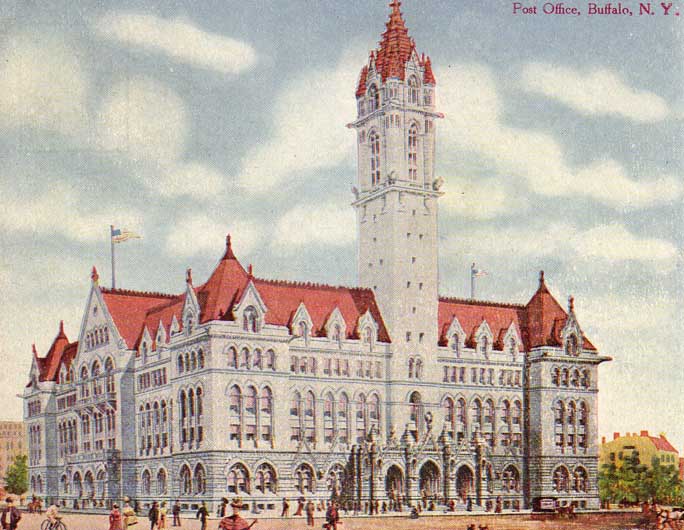 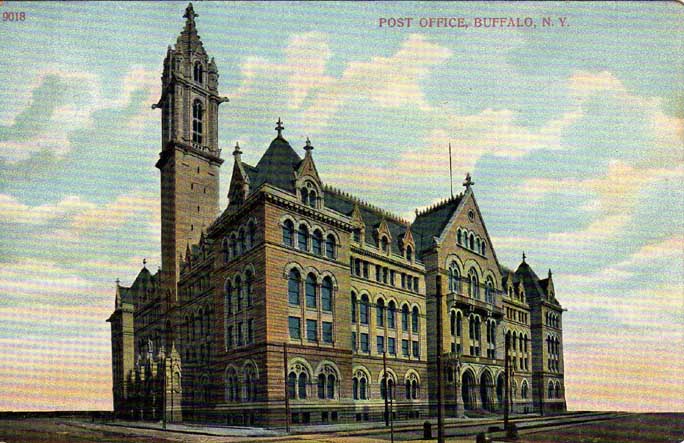 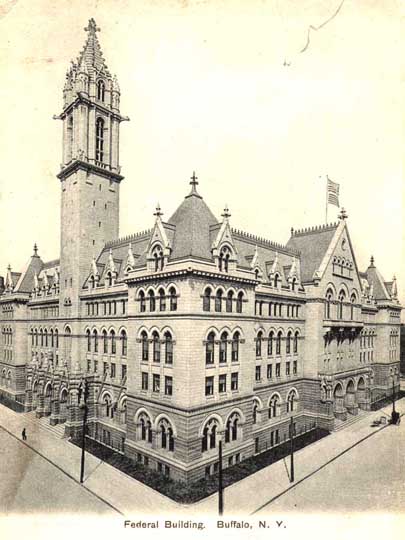 |
Photos taken between 2005 and 2016 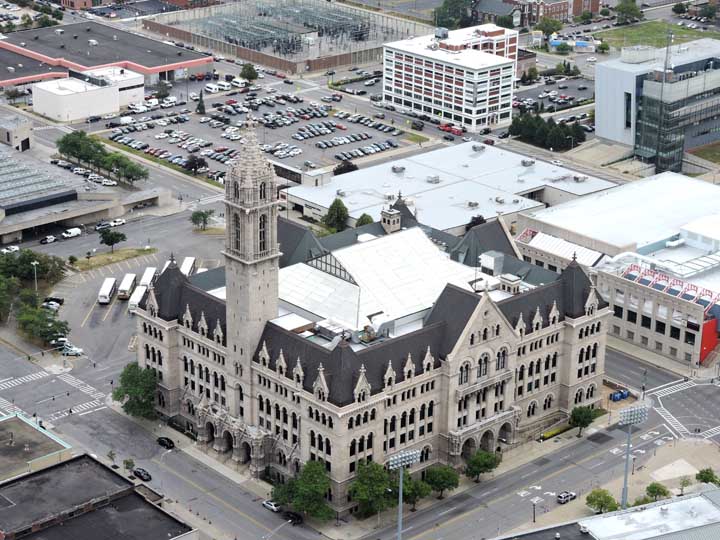 Granite from Maine 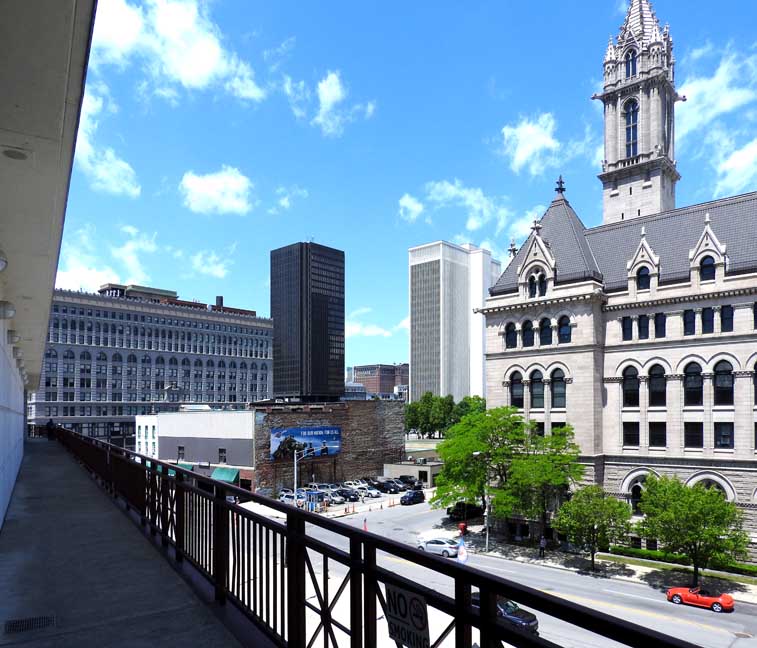 Neighbors: Far left: Bison ballpark ... Ellicott Square Building ... Black tower: Main Place Tower ... White skyscraper: M&T Bank 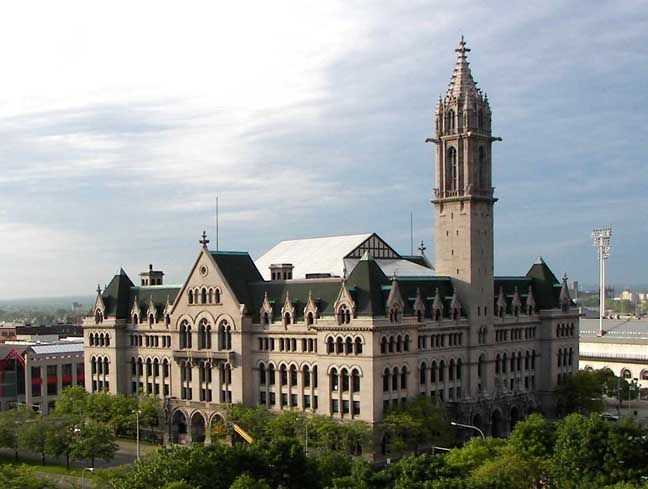 Note skylight 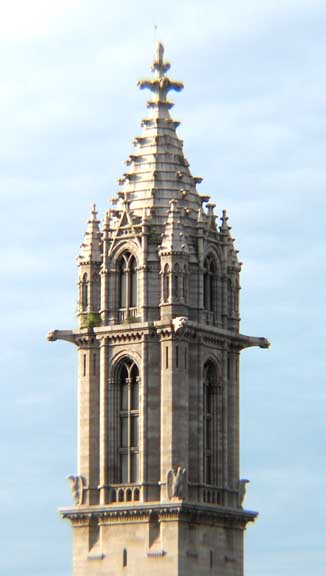 Note: Finial .... Crocketed spire ... Pinnacles ... Gargoyles ... Details below: 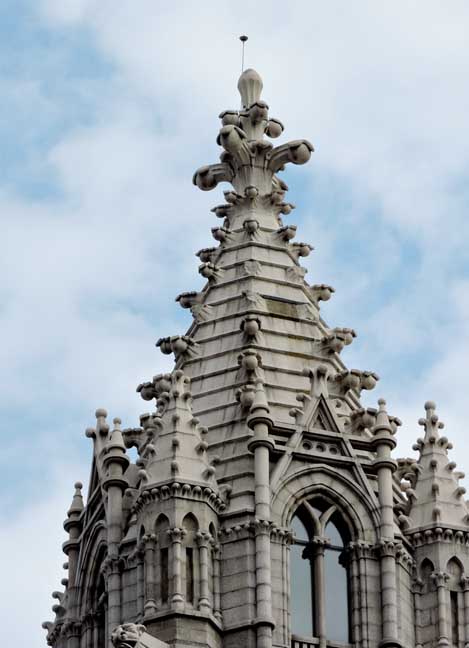 Granite ... Finial .... Crocketed spire ... Pinnacles ... Pointed Gothic arches 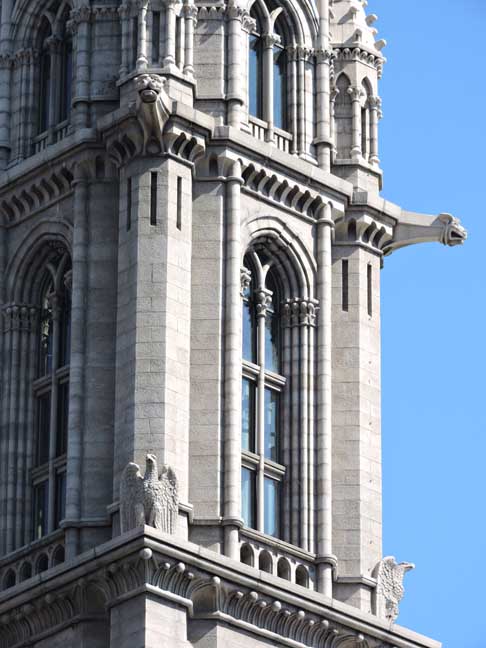 Gargoyles and eagles ... Note the face on the upper gargoyles; illustrated below: 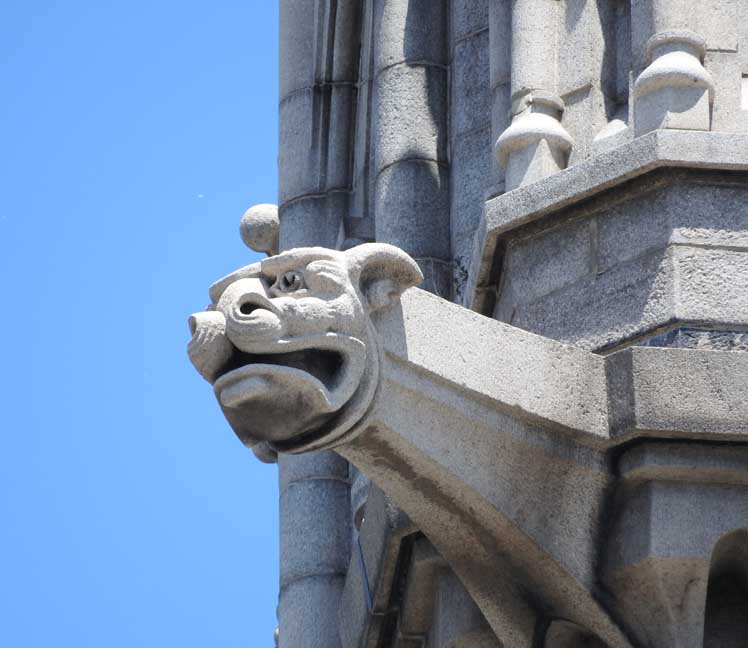 Gargoyle ... Not a waterspout 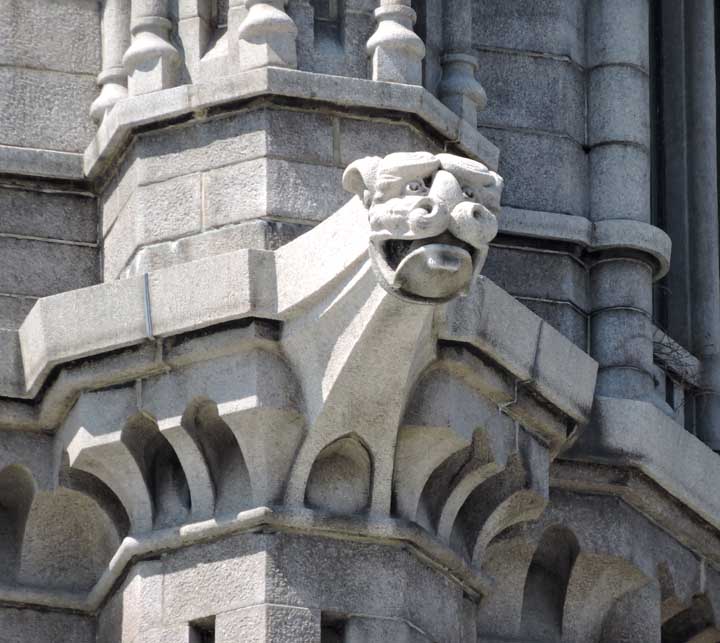 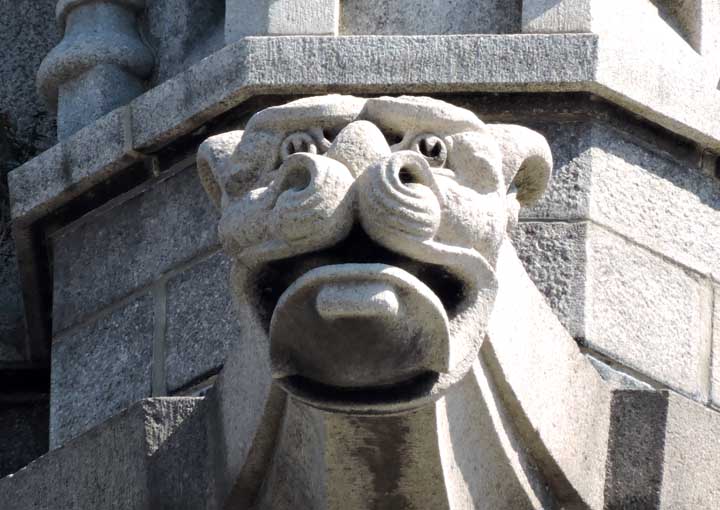 Gargoyle 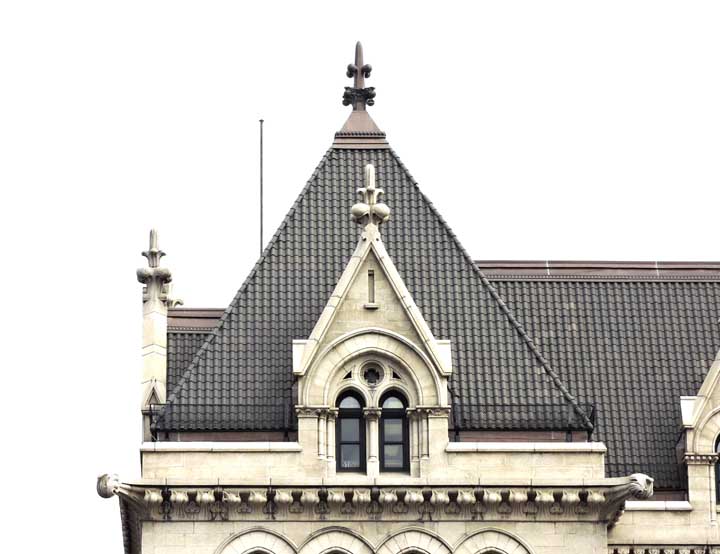 Cross-gable roofs 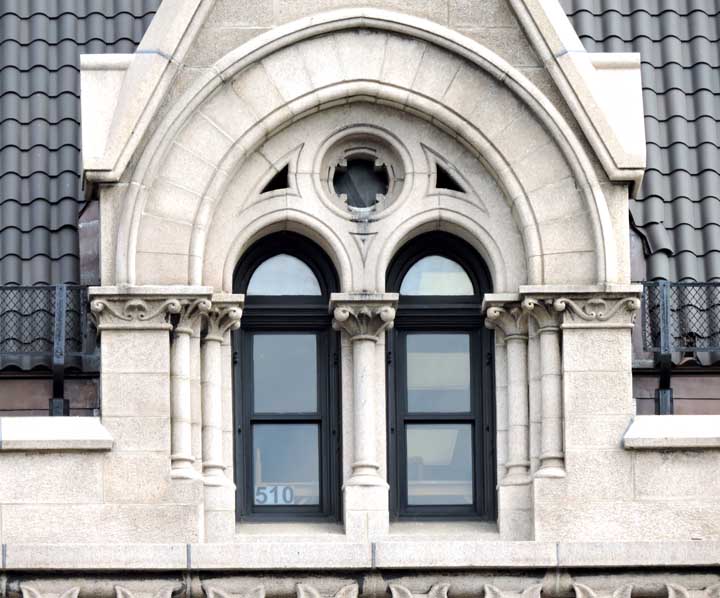 Gothic mullioned window 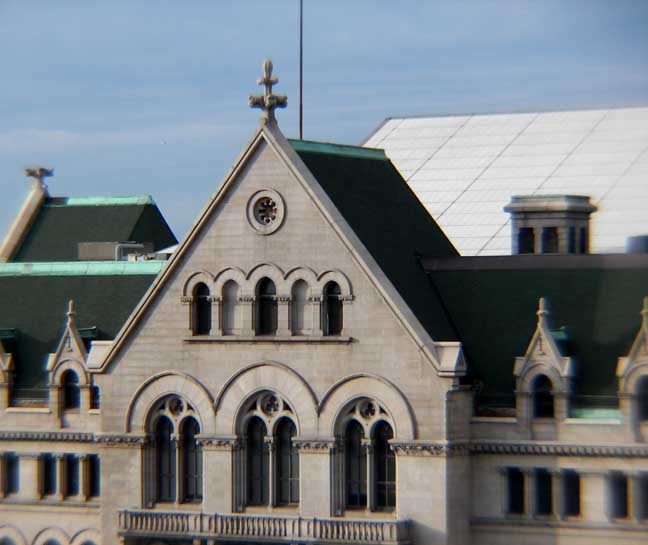 Ribbon windows 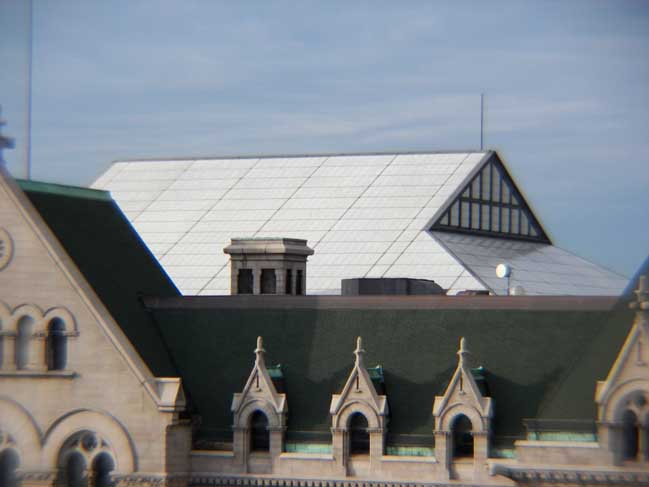 Note skylight 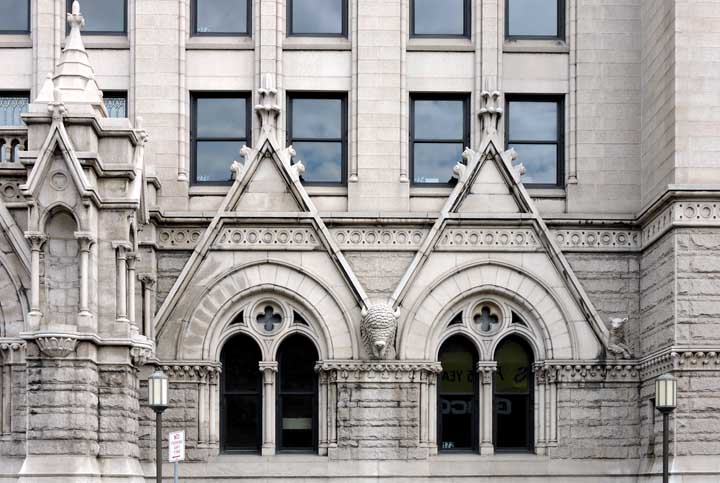 Arcade windows 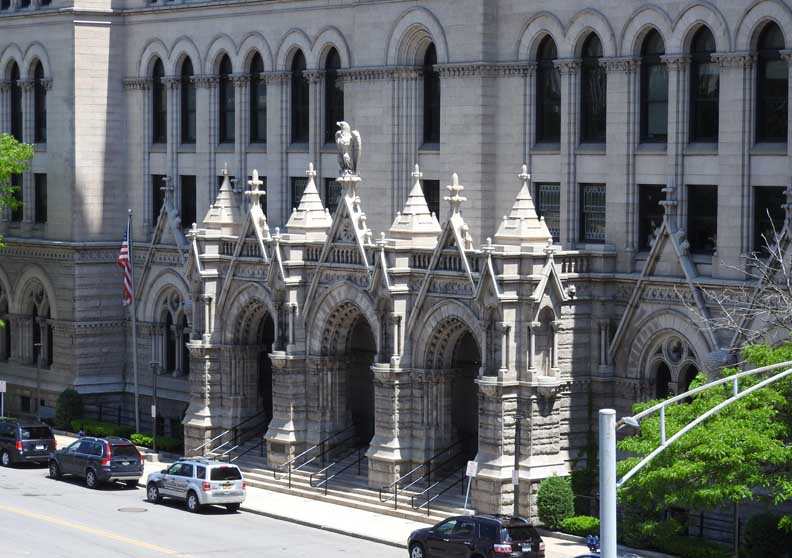 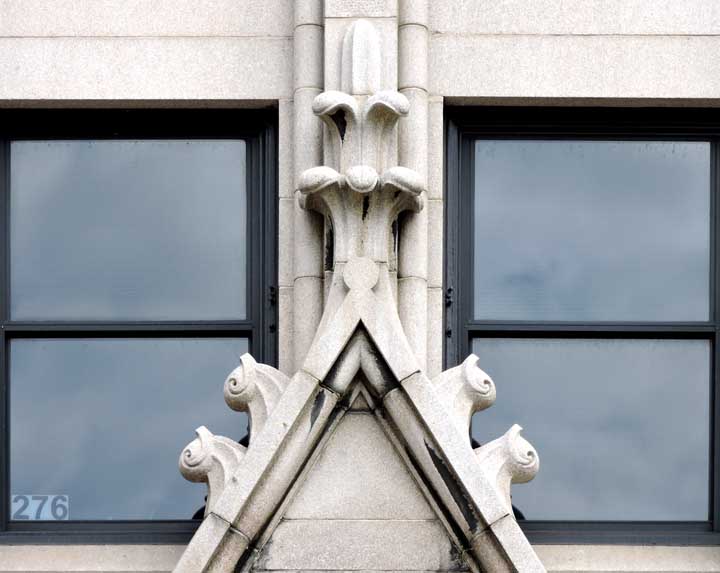 Finial .... Crockets 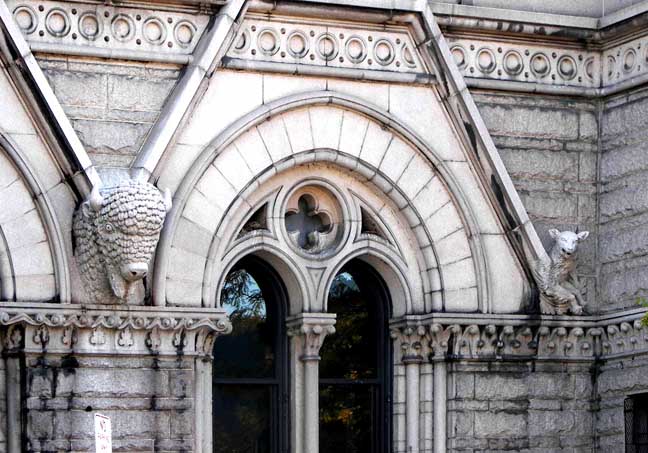 Details of both animals below: 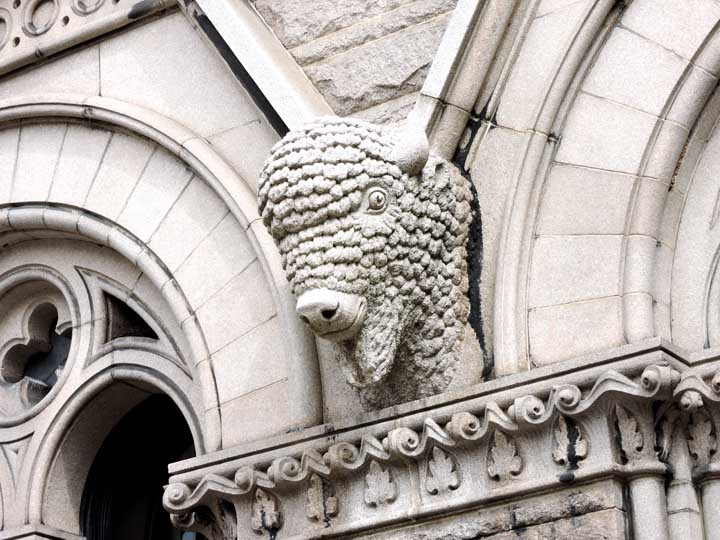 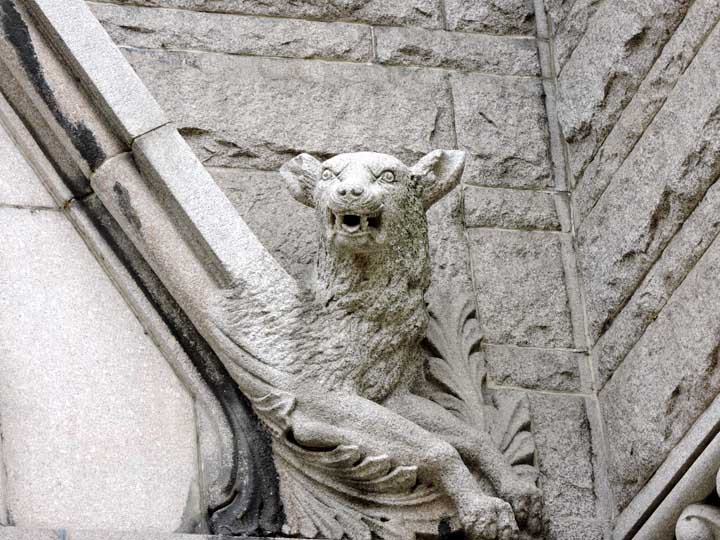 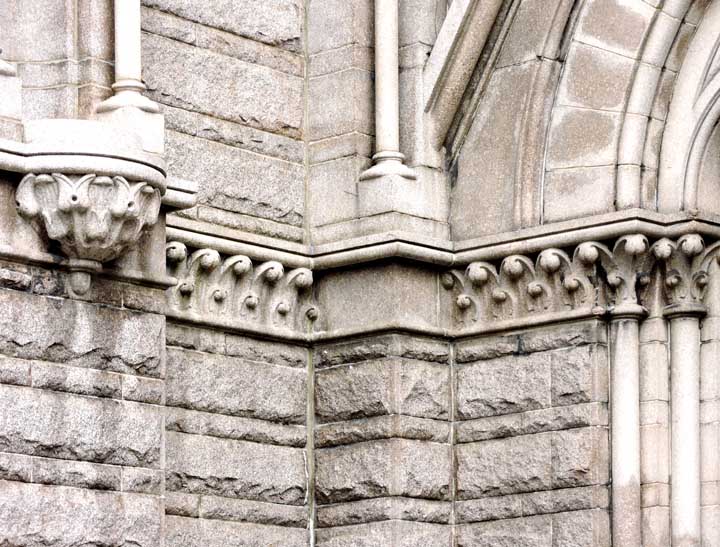 Granite from Maine 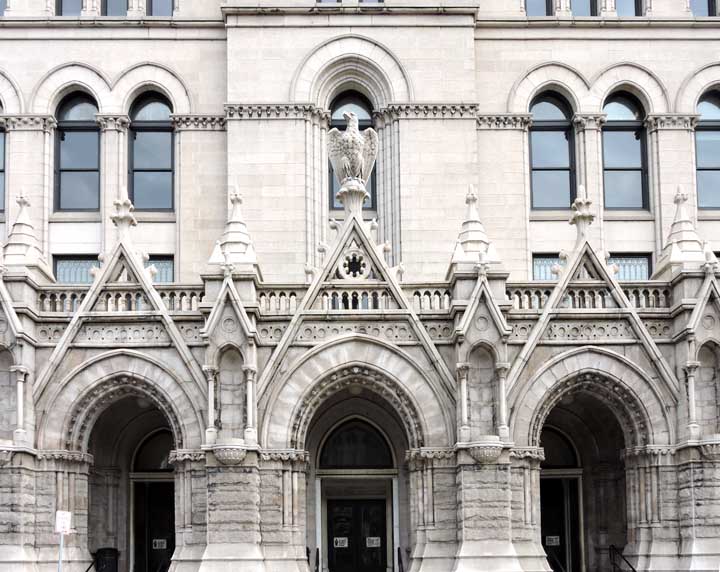 Note multifoil in tympanum 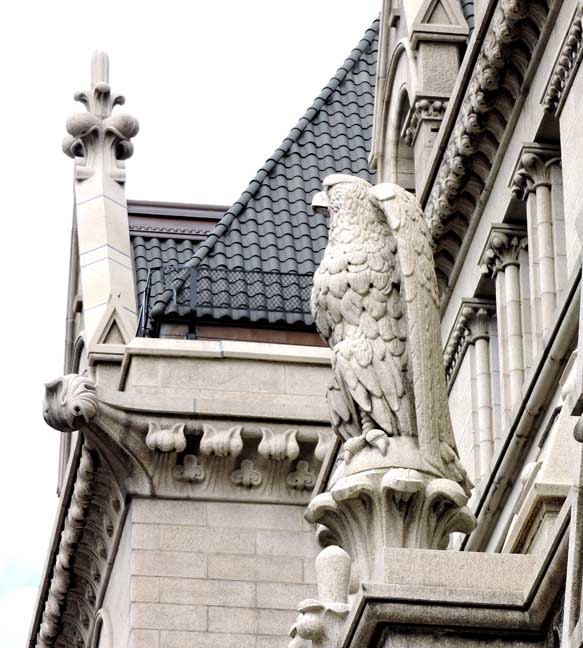 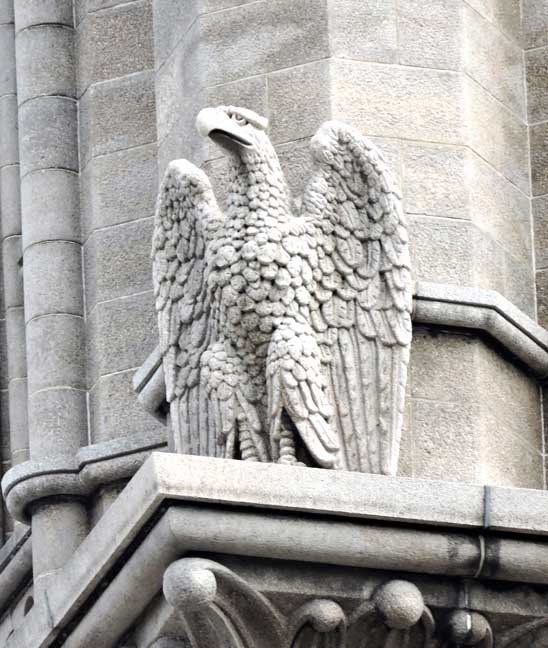 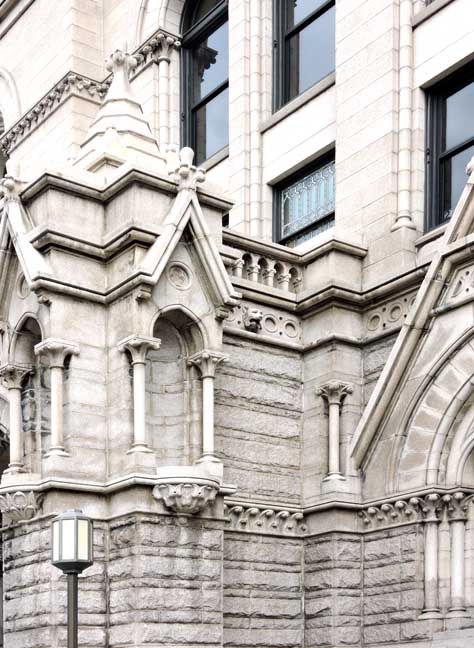 Note animal head/gargoyle ... Details below: 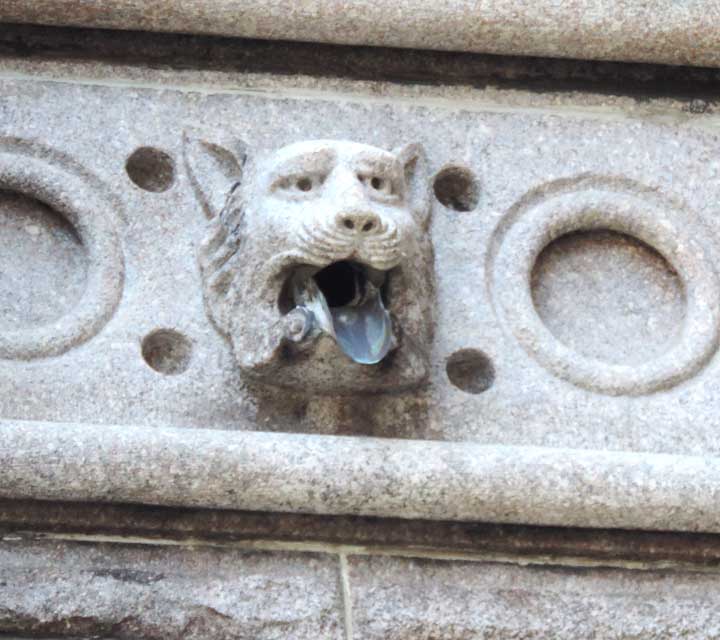 Gargoyle 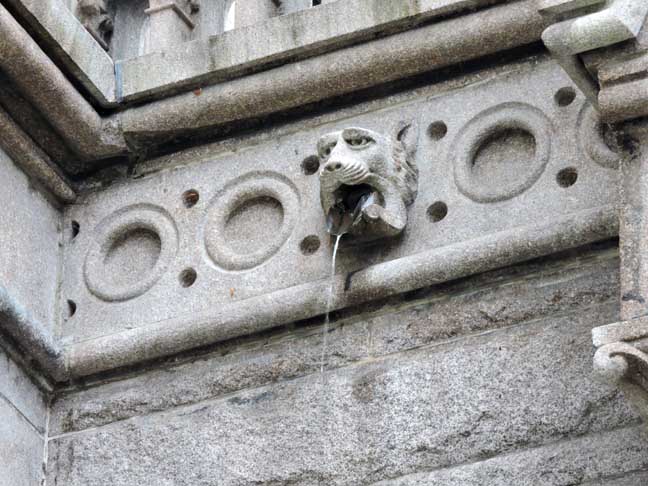 Gargoyle - water spout |
South Elevation 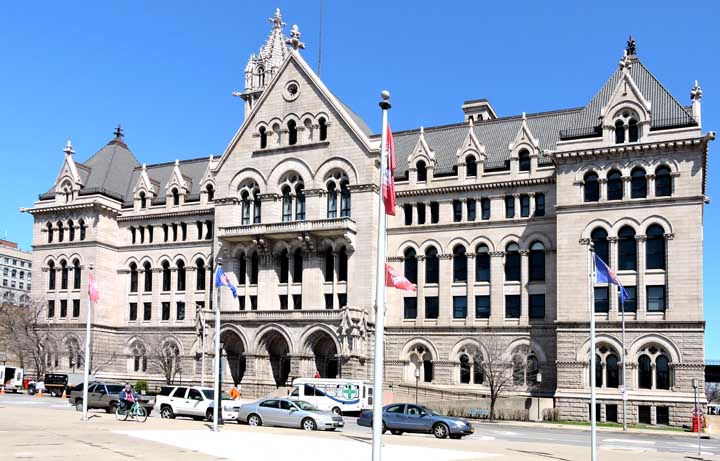 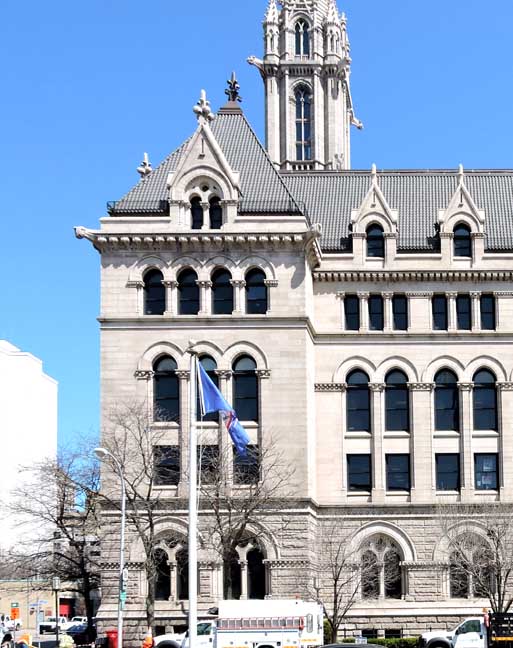 Note two gargoyles just below the pyramidal roof ... Gargoyle details below: 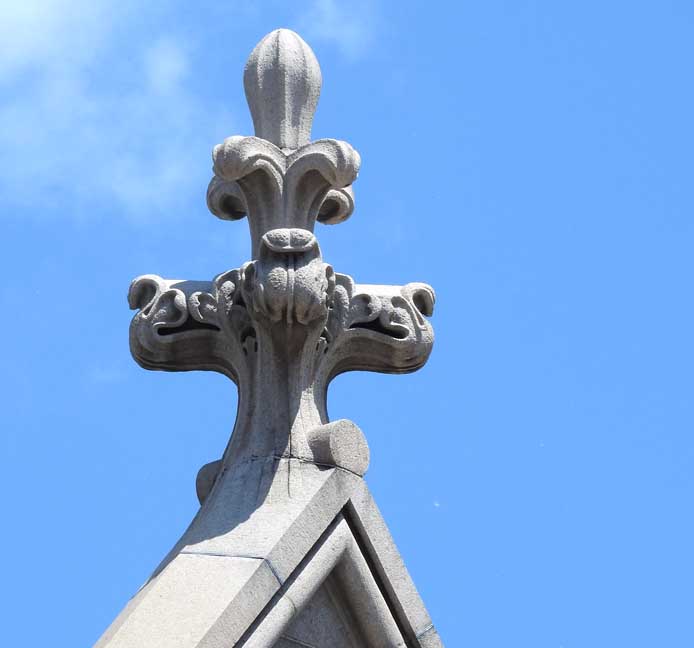 Finial 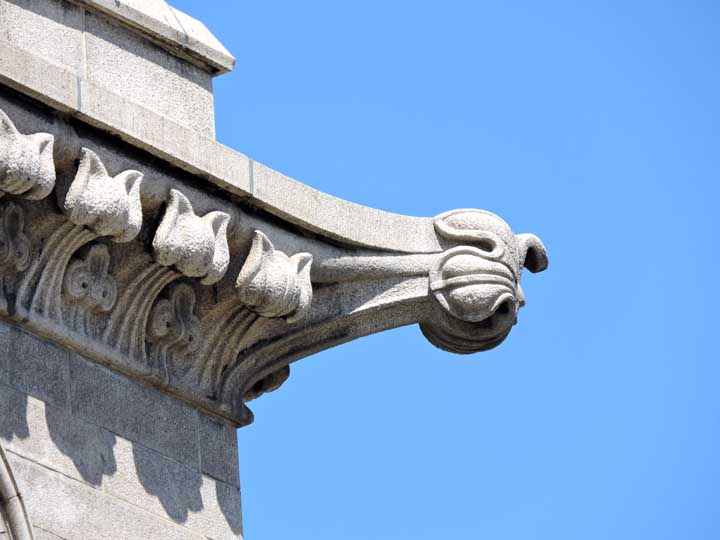 Stone carved tulips? ... Gargoyle: Foliate design - not figural 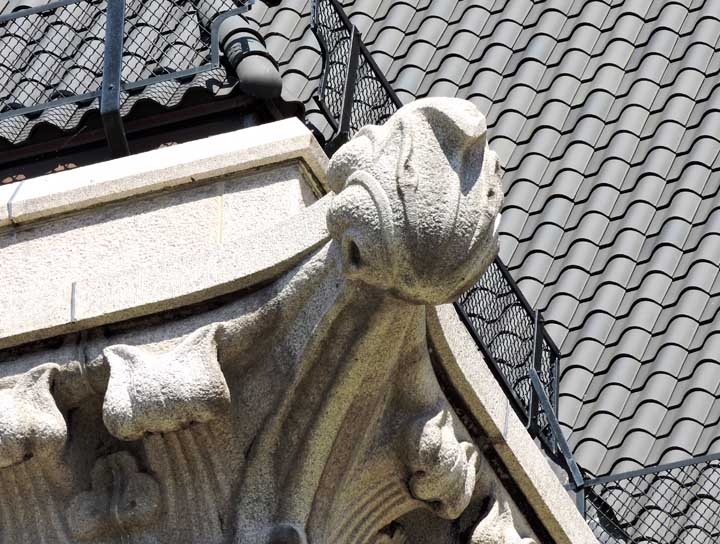 Not a rainspout 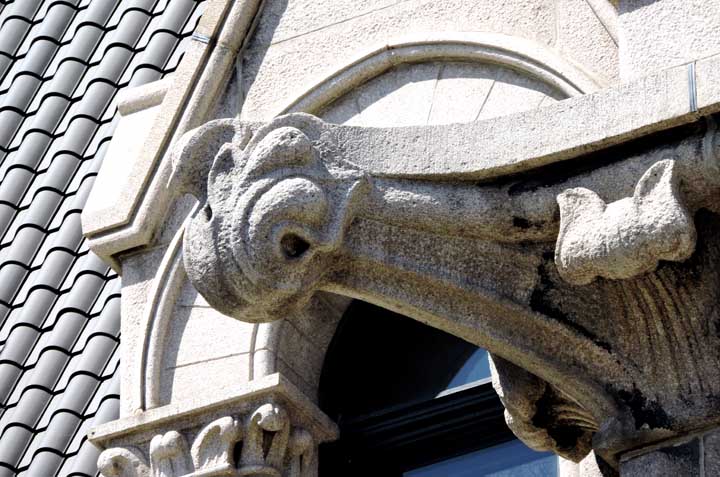 |
East Elevation 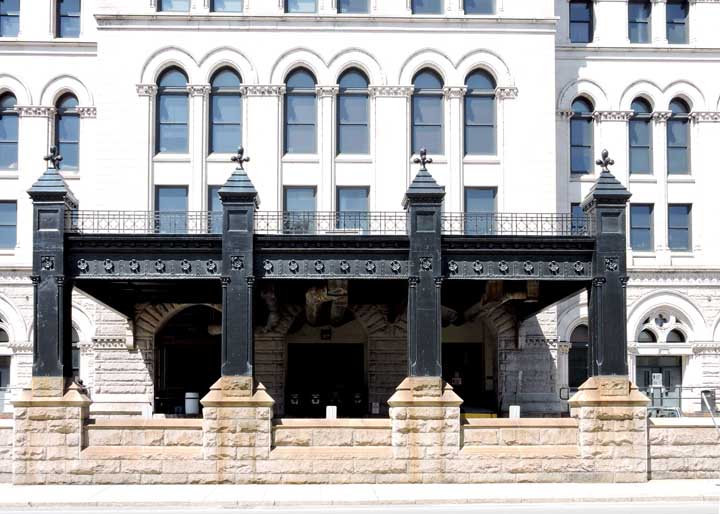 Porte-cochere 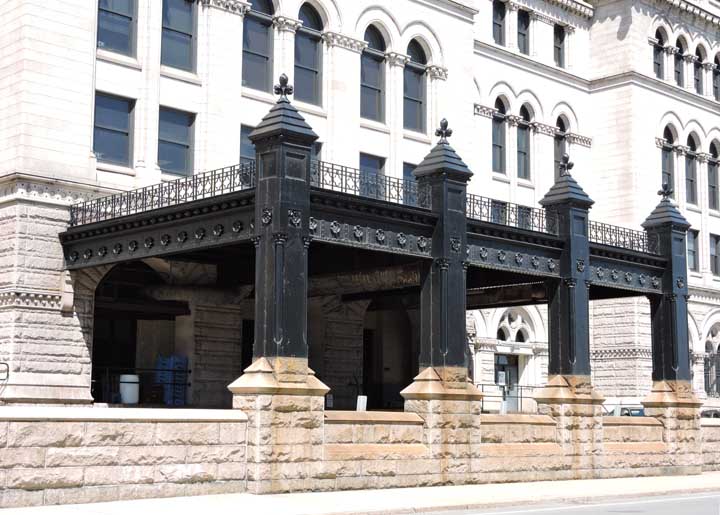 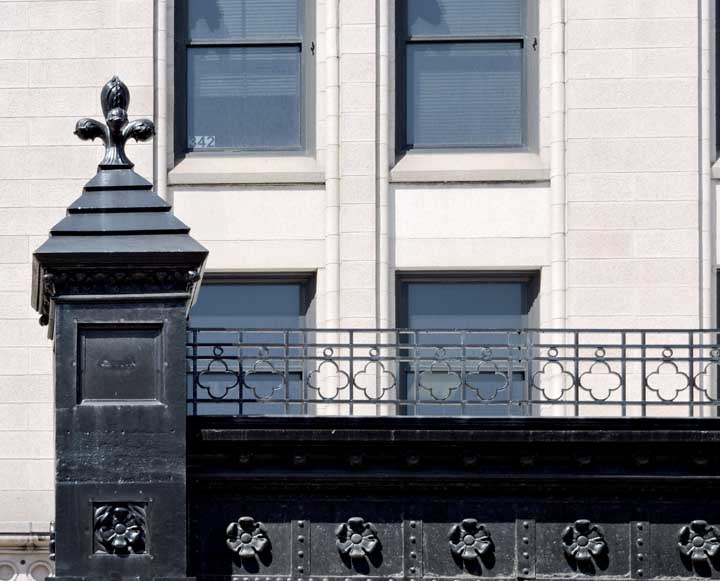 Finial ... Quatrefoils ... Rosettes |
|
Style: |
Victorian
Gothic / Richardsonian
Romanesque See H.H. Richardson, Allegheny County Courthouse and Jail, Pittsburgh, Pa. |
|
Architects: |
|
|
Superintendent of Construction: |
George Metzger |
|
Materials: |
Foundation:
Granite-faced Exterior - Maine Granite. See information supplied by the Maine Granite Museum. (Also, see The Maine Granite Industry Historical Society) Roofs: covered with Spanish green tile laid in concrete Interior - brick wainscoting; terra cotta walls; marble; mosaic tile finishes; principal office rooms and court rooms finished in Mexican mahogany; all other rooms finished in quartered, polished oak. The interior framing system is composed of steel beams. |
|
Granite: |
Pink
granite quarried at Spruce Kent and Jonesboro, Maine. The walls of granite ashlar masonry have a slightly rusticated treatment on the first floor and elevated basement. All other surfaces are finished with highly dressed granite |
|
Brick supplier: |
Columbus, Ohio, Buff Brick and terra Cotta Co. |
|
Cost of construction: |
To December, 1900, $1,522,000. |
|
Windows: |
400. Most of them have one-over-one, double-hung sash |
|
Dedication: |
March 1901, officially opened with mailing of its first letter to Pres. William McKinley, who would be assassinated in Buffalo at the Pan-Am Exposition several months later. |
|
Status: |
Listed
on the National Register of Historic Places. See National Register of Historic Places and scroll to New York State and Erie County. This is the official site. |
|
Porches: |
The three deeply recessed entrances are contained within projecting porches. Stone stairs extend beyond the enclosure of the porches. |
|
Architectural Feature: |
By relieving the mass of the block-square building by slightly projecting corner pavilions, the architects have reduced the Gothic revival decorative treatment to a surface exercise. |
|
Notable Features: |
|
|
Size: |
|
|
Blueprints: |
Approximately 39 sheets of blueprints of the original plans are on file at the National Archives. |
|
Photos: |
The Buffalo & Erie County Historical Society has a minimum of 30 photographs contained within the Iconographic File |
The Old Post Office was the subject of controversy before it was even built. The 1893 Tarnsey Act required architectural competitions for major federal buildings. The Buffalo post office was the first major government building to occur after the act became law. But the Secretary of the Treasury, Henry G. Carlisle, who was responsible for the erection of government facilities, asserted that a design by the federal government's supervising architect, Jeremiad O'Rourke, had already been submitted and approved when the act was passed. The brouhaha must have inspired O'Rourke to extraordinary effort, because he designed a monumental building incorporating Romanesque Revival, Chateauesque, and French Gothic features executed in expensive pink Vermont granite. O'Rourke's plan received added design improvements by his successors, William M. Aiken and James Knox Taylor.
With its tall square tower with its many-crocketed spire, fierce gargoyles and glowering eagles, is one of the most visible and familiar sights of downtown Buffalo.Regarded as having been inspired by H.H. Richardson's great Allegheny Country Courthouse in Pittsburgh, this building possesses a similar dominating tower and clearly defined pavilions on the exterior and a central light court surrounded by galleries on the inside.
The Venetian palazzo-like interior space is one of the most impressive in the city. Exterior ornamentation includes an appropriate bison head, as well as an eagle up above the entrance door.
The building is largely credited to architect James Knox Taylor, who designed a sister post office (now bustling with boutiques and ethnic food counters) in Washington, D.C.
The Old Post Office has been magnificently restored and is now thriving as the Downtown Branch of the Erie County Community College.
Buffalo Post Office History
Buffalo's post office was established in 1804 when Erastus Granger received the appointment as Buffalo's first postmaster from Thomas Jefferson. He set up the first post office at a desk in Crow's Tavern on Exchange Street. The nearest post offices were at Fort Niagara and at Batavia. Mail to Fort Niagara went on horseback via the ferry and up the Canadian side to the Niagara River because the roads were better. In those days the the post office moved with the postmaster. It wasn't until 1837 that the first permanent building, a former Baptist church at the corner of Washington and Seneca Streets, was purchased.Sources:
- Historic American Buildings Survey/Historic American Engineering Record - 8 data pages
- Classic Buffalo: A Heritage of Distinguished Architecture, by Richard O. Reisem
- "Designated Landmarks of the Niagara Frontier," by Austin M. Fox. Buffalo: Meyer Enterprises, P.O. Box 733, Ellicott Station, Buffalo, New York 14205. 1986. OUT OF PRINT.
- "Buffalo Architecture: A Guide," by Francis R. Kowsky, et. al. Cambridge: MIT Press, 1981
- "Post Office," by Chris Andrle. Pub. in Art Voice, August 1, 2001
The Buffalo Post Office opened on March 20, 1901 with a dedication ceremony attended by the Postmaster General, the highest-ranking official to visit from Washington DC, and by many local businessmen. The Postmaster General symbolically mailed the first letter from the 1901 Post Office. Addressed to President William McKinley, the letter was penned by Buffalo postal employees who wrote, “Our Pan-American obligation to show the Western world a high standard of postal service must be honored.”
They were no doubt anticipating the opening of Buffalo’s majestic Pan-American Exposition in May 1901. The Post Office contained a large postal sorting floor on the first floor, and a variety of federal offices including the Justice Department, Bureau of Internal Revenue, Department of Treasury, and Department of the Interior throughout the six-floor complex.
- Denise Prince, "Explore Buffalo Building Profile: Old Post Office." Pub. on Buffalo Rising, May 15, 2020
Adaptive Reuse: ECC
After that significant designation, plans to reuse the building languished until two Erie County Legislators, Minnie Gillette and Joan Bozer, joined forces in an effort to save the building which by this time – perhaps surprisingly – many considered an eyesore. The exterior was covered in soot from decades of air-pollution and the building’s best days seemed to have long since passed. Its Victorian Gothic appearance was distinctly not modern, nor of the moment. People wanted it bulldozed.
Thankfully, Gillette and Bozer persevered and after a decidedly uphill battle their vision for the structure prevailed in a vote by the Erie County Legislature in 1978. They envisioned the old office building being repurposed to serve as a college campus. Under to the Surplus Property Act, Erie County purchased the Old Post Office from the Federal Government for the princely sum of one dollar, while the following renovation and restoration work cost roughly fourteen million dollars.
The Old Post Office became home to the City Campus of Erie Community College in 1981, and the College has resided there (with some expansion to neighboring buildings) since that time. Commonly known as “ECC,” the College has re-branded itself recently as SUNY Erie. The Old Post Office conversion into City Campus was long considered Buffalo’s greatest example of adaptive reuse – the reuse of an existing structure for a purpose other than which it was built.
- Denise Prince, "Explore Buffalo Building Profile: Old Post Office." Pub. on Buffalo Rising, May 15, 2020
